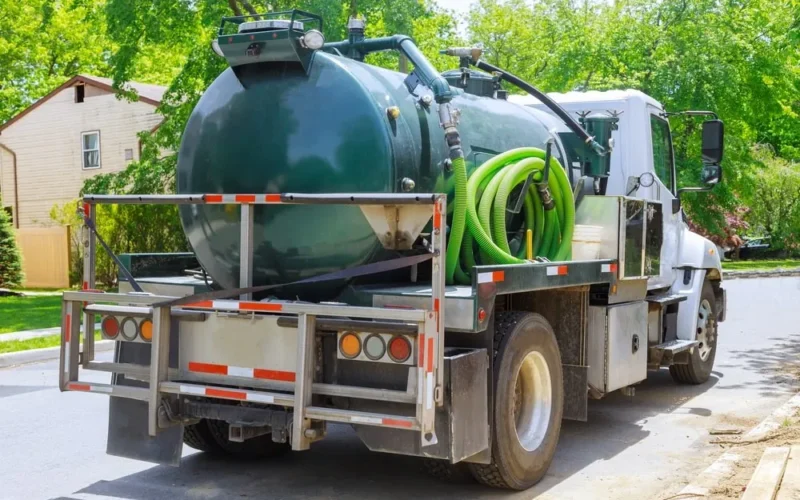Septic tank pumping is a critical aspect of maintaining a functional septic system. While the frequency of pumping primarily depends on factors like household size and tank capacity, there are also seasonal considerations to keep in mind. Understanding the impact of different seasons on your septic system can help you choose the right time for pumping, ensuring its long-term efficiency and preventing potential issues. In this article, we will explore the seasonal aspects of septic tank pumping and provide guidance on when to schedule this essential maintenance task.
The Role of Seasons in Septic System Health
Seasons can have a significant impact on the overall health and performance of your septic system. Here’s how different seasons can affect your septic tank and drainfield:
- Spring: Spring is a time when the ground begins to thaw and moisture levels increase. This can lead to excess water entering the drainfield, potentially causing saturation and reduced drainage efficiency. Additionally, if the septic tank was not pumped before winter, the added thawing may push more solids into the drainfield.
- Summer: In the summer, higher temperatures can accelerate bacterial activity in the septic tank, which is beneficial for breaking down waste. However, increased water usage from activities like watering the lawn or filling a swimming pool can put additional stress on the system. Regular pumping before summer can help prevent overloading the tank.
- Fall: As leaves and debris start falling from trees, they can accumulate in the septic tank and block the inlet or outlet pipes. This can impede the flow of wastewater and require more frequent maintenance. A pre-fall pump-out can help remove any debris and prepare the tank for the coming season.
- Winter: Cold winter temperatures can affect the septic system in multiple ways. Frozen ground can make digging and accessing the septic tank challenging. Additionally, if the tank is not adequately insulated, freezing temperatures can slow down bacterial activity, reducing waste breakdown efficiency. Pumping before winter ensures the tank is at an optimal level for cold weather.
When to Schedule Septic Tank Pumping
Spring Pumping:
- Spring is an ideal time for septic tank pumping if you didn’t have it done before winter.
- If you notice slow drainage, foul odors, or wet spots in the yard during spring, these signs may indicate a need for immediate pumping.
- Pumping in early spring can remove any excess solids that may have accumulated during winter.
Summer Pumping:
- Consider scheduling septic tank pumping in late spring or early summer to prepare for increased water usage during the season.
- Summer pumping can help maintain a healthy bacterial population in the tank, which thrives in warmer temperatures.
Fall Pumping:
- Fall is an excellent time to remove debris and accumulated solids from the septic tank before winter.
- Preventative pumping in the fall can ensure that the tank is not overloaded during the holiday season when households typically have more guests and increased water usage.
Winter Pumping:
- While pumping during winter is less common due to the challenges posed by freezing temperatures, it can be necessary in emergency situations.
- If you experience a backup or notice any issues with your septic system during winter, do not hesitate to call for immediate pumping and repairs.
Factors Affecting Pumping Frequency
While seasonal considerations play a role in determining when to schedule septic tank pumping, there are several other factors that influence the frequency of this maintenance task:
- Household Size: The number of people living in your home directly affects the amount of wastewater generated. Larger households typically require more frequent pumping.
- Tank Size: The size of your septic tank determines its holding capacity. Larger tanks can accommodate more waste and require less frequent pumping.
- Water Usage: High water usage, such as excessive laundry, long showers, or running a dishwasher frequently, can lead to more frequent pumping needs.
- Solid Waste Disposal: What you flush down the toilet or pour down the drains matters. Avoid flushing non-biodegradable items, chemicals, grease, and excessive solids, as these can clog your septic system and necessitate more frequent pumping.
- Previous Pumping Schedule: Your past pumping schedule can also affect future needs. If you’ve been consistent with scheduled pump-outs, your tank may require pumping less frequently.
- Septic System Age: Older septic systems may have accumulated more sludge and require more frequent attention.
- Soil Type: The type of soil in your drainfield can impact drainage and the rate at which effluent is absorbed. Certain soil types may necessitate more frequent pumping.
Conclusion
Choosing the right time for septic tank pumping involves a combination of factors, including seasonal considerations and individual circumstances. Regular maintenance, along with awareness of the impact of different seasons on your septic system, is essential for its long-term health and efficiency. By staying proactive, scheduling pump-outs as needed, and following the guidance of professionals, you can ensure that your septic system continues to operate smoothly throughout the year. Remember that a well-maintained septic system not only provides convenience for your household but also protects the environment and your property value.











